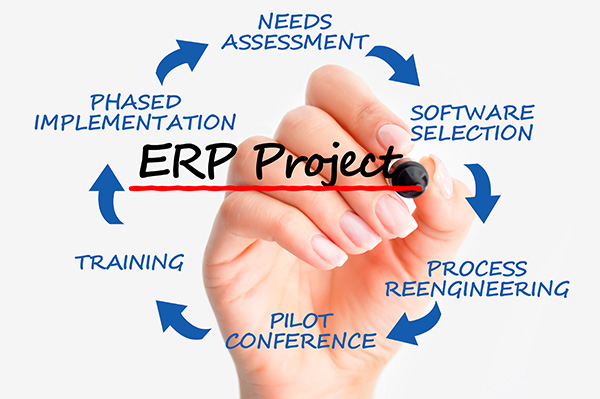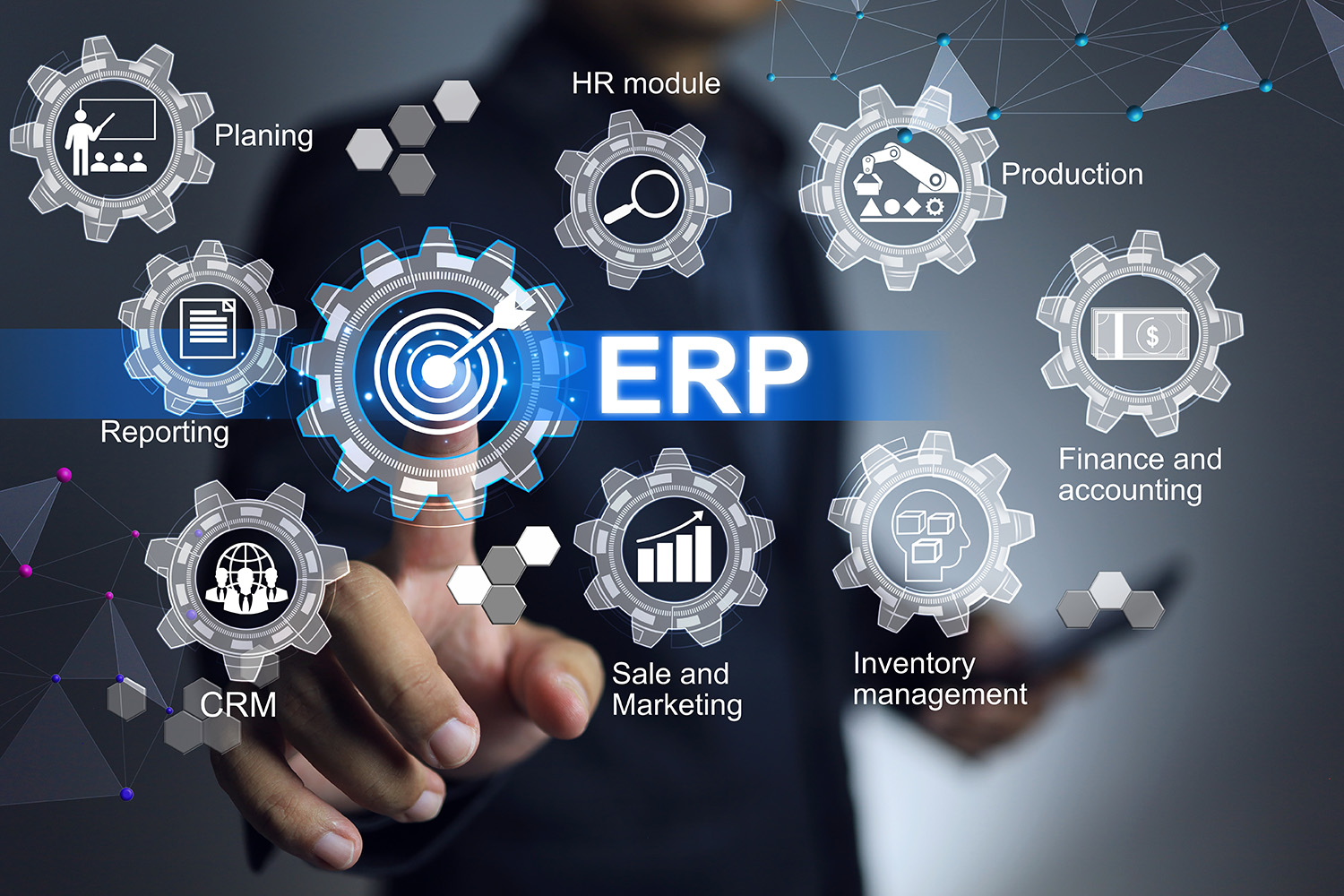In the rapidly evolving renewable energy sector, independent power producers (IPPs) face unique challenges. Enterprise Resource Planning (ERP) systems emerge as a crucial foundational tool for streamlining operations, enhancing decision-making, and driving efficiency. However, for an ERP system to deliver its full potential, it must be right sized for the organization, be easily configurable, and possess an open architecture that supports seamless integrations. This blog explores the importance of implementing a tailored ERP solution for IPPs and addresses the challenges of ERP customization, integration, and reporting.
The big picture
An ERP system is the backbone of organizational operations, integrating various business processes into a single unified system. An ERP can centralize data from multiple departments—such as finance, human resources, supply chain, and asset management—into one platform. This unification facilitates real-time data visibility, enabling better decision-making, improved resource management, enhanced operational efficiency and controls.
Given the capital-intensive nature of the renewable energy industry, managing financials effectively is critical. An ERP system can track the costs associated with each project, from initial investment to ongoing maintenance, providing a clear view of profitability. Additionally, ERP systems can help manage regulatory compliance by ensuring that all necessary documentation and processes are in place, reducing the risk of costly fines.
The good thing is that those core function of all organizations is highly similar from one to the other, even in different industries, which brought a good amount of competition and maturity in the ERP systems.
Right-Sizing ERP: The Key to Success
One of the most critical factors for IPPs when implementing an ERP system is ensuring it is right sized for the organization. A common mistake is selecting an ERP that is either too complex or too simplistic for the business’s needs. An oversized ERP can overwhelm a smaller IPP with unnecessary features, leading to higher costs and complicated user adoption. Conversely, an undersized ERP may lack the necessary functionality, forcing the organization to resort to inefficient manual processes or bolt-on solutions.
Right-sizing involves choosing an ERP that aligns with the size, localization, complexity, and growth trajectory of the business. For IPPs, this means selecting an ERP that can handle the core requirements—such as asset management, financial tracking, and regulatory compliance—without adding unnecessary layers of complexity. It should be scalable, allowing the organization to add more features or users as it grows, but not so vast that it becomes unmanageable for the current state of the business.
Importance of the Eco-system to never fall behind
Pick a popular ERP in your sector and region, with an eco-system of add-ins, natively integrated solutions.
No software company can really keep up with the innovation. The largest players will make acquisitions of successful start-ups to continue to extend their offering. Just think of SAP with the acquisitions of SuccessFactor, Ariba, Concur and more recently Walkme!
If you pick a smaller ERP with a good eco-system, you’ll have the ability to benefit from the new innovative solutions through integrated solutions of innovative start-ups, especially with tailored AI capabilities.
The Pitfalls of Customization
Customization is often seen to tailor an ERP system to meet specific business needs. However, excessive customization can lead to significant challenges, including increased implementation time, higher costs, and difficulties with system upgrades. Customizations can also create dependencies that tie the organization to specific vendors or consultants, reducing flexibility and increasing long-term costs and risks.
Instead of heavily customizing an ERP system, IPPs should seek out systems that are easily configurable. Configurable ERP systems allow businesses to modify workflows, dashboards, and reports to fit their needs without altering the underlying code. This approach reduces complexity and ensures that the ERP system can be easily updated and maintained over time.
One business, one ERP
In the renewable energy sector, mergers and acquisitions are common as companies seek to expand their portfolios. However, these activities can lead to a situation where an organization ends up with multiple ERP systems. Managing multiple ERPs are costly, inefficient, and lead to data silos where critical information is fragmented across different systems.
IPPs should aim to consolidate their operations under a single ERP system. A unified ERP ensures that all business processes are aligned, data is centralized, and there is a single source of truth for decision-making. This consolidation simplifies IT management, reduces costs, and enhances operational efficiency. However, transitioning to a single ERP system requires careful planning and execution to ensure that all data is migrated effectively, and that the new system meets the needs of the entire organization.
As you grow and buy new business, eat the frog and have a plan to integrate to one digital architecture; it requires good change management, but it is the way to keep the organization lean and efficient.
The Importance of Choosing the Right Implementer
Even the best ERP system can fall short if it’s not implemented correctly. The success of an ERP implementation heavily depends on selecting the right implementer with proven experience in the specific ERP being deployed. A skilled implementer not only configures the system to meet your business’s unique needs but can also bring ERP accelerators—pre-built templates and methodologies developed over time—to speed up the implementation and reduce risks.
Before considering a costly change of your ERP system due to underperformance, it’s crucial to assess whether the issue lies with the current implementation or management. Often, the right tool might seem inadequate simply because it was implemented or managed poorly. Bringing in experts who can leverage accelerators, or outsourcing to specialized service providers, can optimize your existing ERP, ensuring it delivers the intended benefits without the need for a complete overhaul.

Nothing is perfect in life
ERP are not perfect. They have limitations, which brings organizations to often think of customizations which are not good as discussed before.
If the limitation that would require a customization brings you to breach a regulation in your industry, in your country, then ask yourself if you have the right ERP for your business. If the limitation is due to an internal process, ask yourself why the tool needs to adapt you and not you for the tool…
Sometimes the reason is that your organization is creative and innovative to find ways to be more efficient, but your ERP is too restrictive in terms of configurations or not have new capabilities that specialized start up solution offers (Automation of Account payable, Predictive maintenance, …). In those case the open architecture of your ERP should allow you to benefit from those and keep up with the competition.
Strength of the ERP is rarely its reporting, but this can now be easily fixed with data analytics and vitalization tools.
Often ERP vendor offers highly configurable tools that can do almost everything, but an incorrect implementation might turn the best tool on paper into a nightmare to use.
Value Proposition of ERP
Having one single version of the truth is essential for an organization to be lean, efficient and collaborative as everyone work from the same core tool, no matter which location they work from. Those are essential for your organization to grow. ERPs keep your data safe with good controls and data quality, bolster collaboration as all department take the core information from the same place which eliminate redundant work and processes and facilitate automation.
Once you have data you trust, you can do better analytics and monitoring it is easy to extract more value from it. At the end ERP increases your efficiency and control which will save you money and make your compliance way simpler!
Conclusion, encourage action
Choosing the right ERP system is crucial but it is equally important to select the right team to implement it. This involves understanding well your needs of being in the renewables industry, securing experienced partners who can bring ERP accelerators to the table, and creating a clear roadmap for implementation and change management. Avoid at all costs excessive customization and adapt to the system’s capabilities, complementing it with integrated solutions when necessary.
In essence, success comes from picking the right tool and the right team. With strategic advice and approach, you can ensure that your ERP system enhances efficiency and supports long-term growth. Now is the time to evaluate your options and take action!
Yanic Croteau is Virtual CIO at FluxCIO






